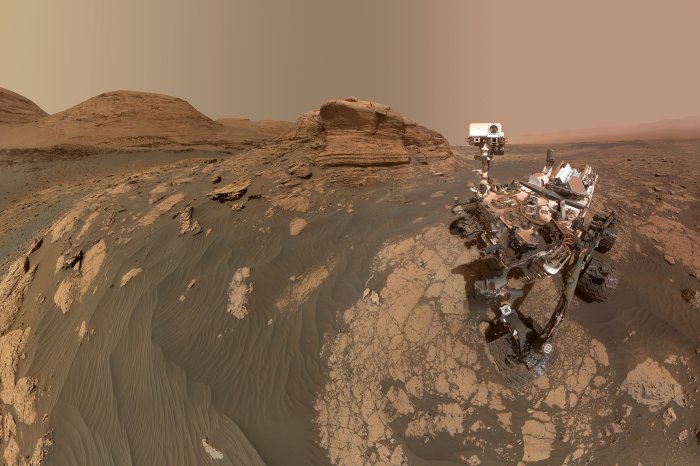The Chinese rover will spend three months searching for signs of water or ice. File Photo courtesy of NASA |
License Photo
May 15 (UPI) -- China landed a rover on the surface of Mars for the first time Saturday, the China National Space Administration announced.
The Tianwen-1 orbiter launched from the island province of Hainan on July 23 and entered Mars orbit in February. The rover, Zhurong, named after the Chinese god of fire, set down on the red planet Saturday morning.
China is the second country after the United States to place a rover on the surface of Mars. The former Soviet Union landed a probe on Mars in 1971, but lost contact immediately.
The rover descended from the orbiter via entry capsule, lowering by parachute before jettisoning its outer shield and using a retrorocket to land. Geng Yan, with the Lunar Exploration and Space Program Center at the CNSA, said the rover's descent took about 9 minutes and was performed autonomously.
"Each step had only one chance, and the actions were closely linked. If there had been any flaw, the landing would have failed," he told state-run media Xinhua.
The rover will spend three months searching for signs of water and ice on Mars.
NASA’s Curiosity Mars rover used two different cameras to create this panoramic selfie, comprised of 60 images, in front of Mont Mercou, a rock outcrop that stands 20 feet tall on March 26, 2021, the 3,070th Martian day, or sol, of the mission. These were combined with 11 images taken by the Mastcam on the mast, or "head," of the rover on March 16. The hole visible to the left of the rover is where its robotic drill sampled a rock nicknamed "Nontron." The Curiosity team is nicknaming features in this part of Mars using names from the region around the village of Nontron in southwestern France. Photo courtesy of NASA/JPL-Caltech/MSSS
















